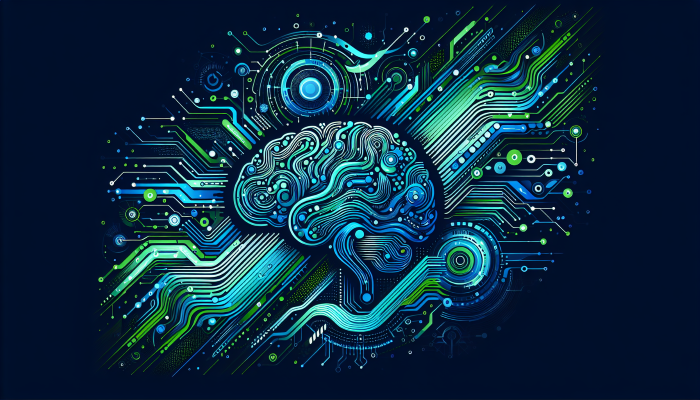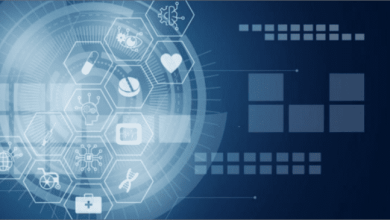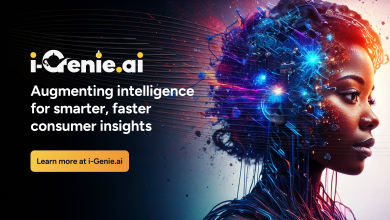
Introduction: AI and the Shifting Employee Landscape
Artificial intelligence is transforming how businesses operate, from marketing automation to predictive analytics to customer support chatbots. But while most of the headlines focus on enterprise-scale adoption, a quieter revolution is happening at the level of individual employees. Instead of waiting for IT departments to roll out new tools or for vendors to ship feature updates, employees are beginning to use AI-powered coding assistants to build their own lightweight, task-specific “micro-apps.”
These apps don’t try to be enterprise platforms. They don’t aim to serve the entire organization. Instead, they tackle one specific pain point, often a tedious, repetitive workflow that traditional software overlooks or complicates. In doing so, micro-apps are reshaping how employees experience work, creating a new model of autonomy, creativity, and accountability.
The implications are profound. As employees become empowered to build their own tools, the boundary between “user” and “developer” blurs. Work itself is being redefined, and with it, the employer-employee relationship.
What Are Micro-Apps?
Micro-apps are lightweight, single-purpose applications designed to solve a narrow business problem. Unlike enterprise SaaS platforms, which bundle dozens of features to appeal to a wide customer base, micro-apps focus on simplicity and immediacy.
A typical micro-app:
- Is built in hours or days, not weeks or months
- Has a very limited scope, often automating just one workflow
- Is often built by the person experiencing the problem, not a dedicated IT team
- Leverages AI coding assistants like Cursor, Replit Ghostwriter, GitHub Copilot, or Warp AI to accelerate development
Think of them as the digital equivalent of a custom spreadsheet macro, but with more intelligence, flexibility, and usability. Where once employees hacked together processes with formulas, pivot tables, and conditional formatting, they can now create AI-assisted applications that are far more robust and user-friendly.
A Real Example: From 20 Spreadsheets to One Button
Consider the billing process in many companies. Often, preparing a single billing file requires juggling dozens of spreadsheets, extracting data from multiple reports, reconciling discrepancies, and performing manual transformations before the final file can be uploaded into billing software.
In one case, this process involved 20 separate spreadsheets and countless steps. The margin for error was huge, and the time cost was painful. By using an AI coding assistant and a modern IDE, a custom-built micro-app was created to automate the entire process. Now, instead of an hours-long task, it’s a button click: the app synthesizes all the data, checks the logic, and generates a ready-to-upload billing file.
The productivity gain is obvious. But the deeper significance lies in the empowerment: the employee no longer had to wait for IT to implement a feature request or for a vendor to build a custom integration. They solved their own problem: quickly, effectively, and permanently.
The Broader Trend: Bottom-Up Technology Stacks
This is where micro-apps intersect with the larger discussion about employee experience. For decades, technology adoption in companies followed a top-down model: leadership or IT selected the software, negotiated the licenses, and rolled it out across the organization. Employees had little say beyond providing feedback or submitting tickets.
Micro-apps invert that model. They enable bottom-up innovation, where employees create or adapt tools to fit the way they actually work. This has several implications:
- Founders and leaders may start questioning the ROI of large, one-size-fits-all platforms. If a $200,000 subscription can be replaced by a $20,000 custom solution, or even by employee-built micro-tools, the economics of SaaS begin to shift.
- Savvy technologists inside organizations may choose to build their own utilities rather than endure the friction of complex enterprise software. The logic is simple: why wrestle with a bloated platform when you can create a lean, focused tool that does exactly what you need?
- Employees themselves gain new autonomy. Instead of adapting workflows to fit software, they shape software to fit workflows. That shift transforms not only productivity but also engagement and satisfaction.
The analogy here is the “Bring Your Own Device” (BYOD) movement of the 2010s. Just as employees once demanded to use their own smartphones and laptops at work, they may soon demand the freedom to create and use their own software tools. Except this time, it’s not just about hardware—it’s about the very logic of how work gets done.
The Challenges: Fragility and Maintenance
Of course, micro-apps are not a panacea. They come with real challenges that organizations will need to address:
- Data dependencies: Micro-apps often rely on specific data sources, structures, or APIs. A small change to a database schema or report format can break them instantly.
- Business logic drift: Processes evolve. When business rules change but micro-apps aren’t updated, errors creep in. A tool that once saved time can quickly create risk.
- Governance and compliance: Employee-built apps may not meet organizational standards for security, data handling, or regulatory compliance. This raises concerns, especially in industries like finance, healthcare, or government.
- Ownership and accountability: Who maintains the app? The employee who built it? Their manager? IT? As these tools proliferate, companies will need clear policies around stewardship.
This creates a paradox: the very flexibility that makes micro-apps valuable also makes them fragile. In practice, organizations will need to strike a balance, supporting grassroots innovation while putting guardrails in place to prevent chaos.
What This Means for the Employee Experience
At its core, the rise of micro-apps redefines what it means to be an employee in a knowledge economy. Three major shifts stand out:
- Autonomy
Employees no longer have to wait for tools; they can create them. This fosters a sense of ownership over work and reduces the frustration of being constrained by software that doesn’t fit. Autonomy has long been correlated with job satisfaction; micro-apps turbocharge it.
- Creativity
Problem-solving is no longer confined to managers or IT departments. Every employee has the potential to be a technologist. This democratization of innovation mirrors the rise of the “citizen data scientist” in the analytics space. Expect to see “citizen developers” become equally common.
- Responsibility
With great power comes great responsibility. Employees who build tools also inherit the obligation to maintain them. This introduces a cultural shift: productivity is no longer just about doing the work but also about ensuring the tools themselves remain accurate and reliable.
For HR and leadership, this creates new challenges and opportunities. Supporting employee-led innovation may require new training programs, new recognition systems, and new governance frameworks. But the payoff is a more engaged, empowered, and innovative workforce.
Implications for Employers
For employers, the rise of micro-apps is not just a productivity story; it’s a strategic one. Leaders should be asking:
- How do we support this trend without losing control?
Providing employees with safe, approved environments for building micro-apps may be smarter than trying to suppress them.
- How do we balance autonomy with compliance?
Setting up lightweight governance frameworks, such as code reviews, security checks, and data validation, can help maintain standards without stifling creativity.
- How do we measure ROI?
Micro-apps may not show up in traditional software budgets, but their impact on employee productivity and morale is significant. Organizations will need new metrics to capture this value.
- How do we rethink our tech stack?
If employees can build their own tools, do we really need every enterprise subscription we’ve been paying for? Leaders may need to rethink procurement strategies in light of grassroots innovation.
The Road Ahead
We’re still far from a world where employees can “vibe code” enterprise-grade applications that span multiple departments or functions. Large-scale systems with complex integrations, regulatory requirements, and mission-critical uptime will remain the domain of specialized vendors and IT teams.
But in the meantime, micro-apps are carving out a powerful niche. They’re not replacing enterprise software, but they are reshaping how employees interact with it and, more importantly, how employees experience their work. The future of the employee experience may not be defined by the big platforms companies buy, but by the small tools employees build.
As AI continues to lower the barrier to software creation, expect to see more employees step into the role of creator, not just user. And as they do, the definition of work itself will evolve faster, more flexible, and more employee-driven than ever before.



